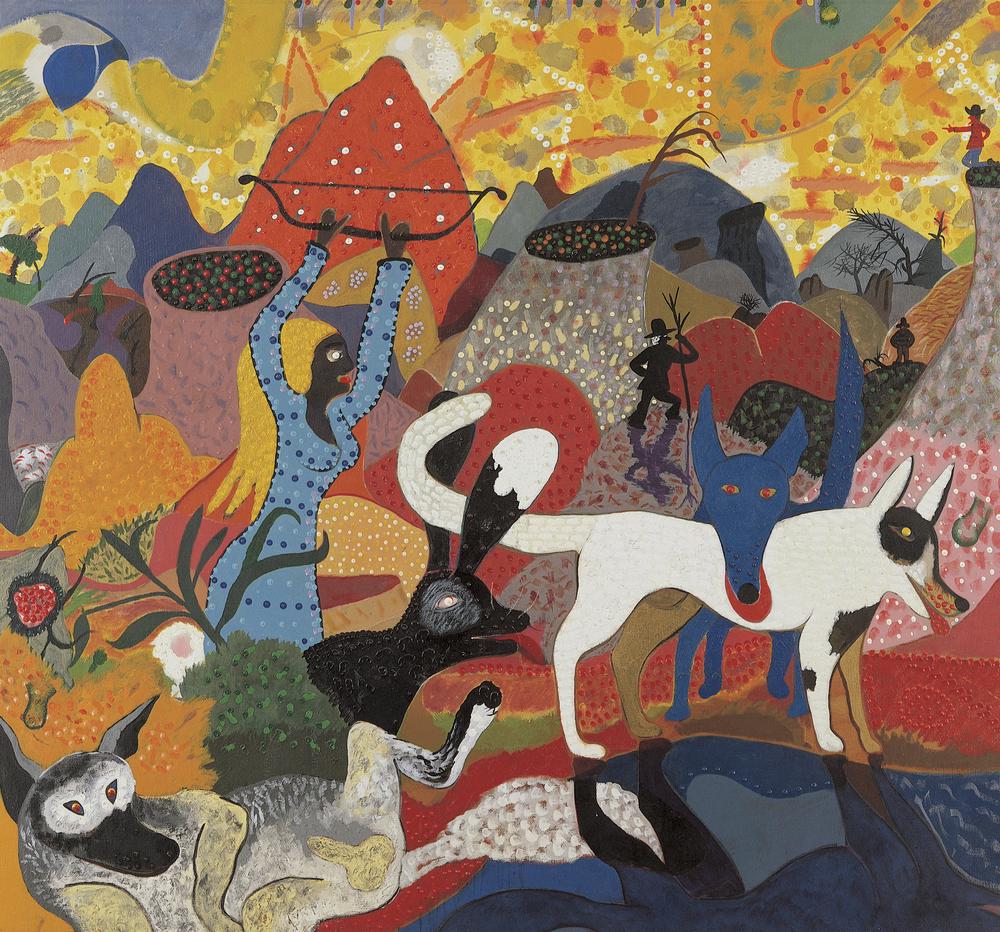Roy De Forest. Abstraction to Animals

In 1963 Fred Martin, then-director of exhibitions at the San Francisco Art Institute, invited Roy De Forest and contemporaries Wally Hedrick and John Coplans to help him curate Some New Art in the Bay Area, an exhibition of the region’s art after Abstract Expressionism, showing the scene to be “radically different . . . innately optimistic, rapidly expanding, opulent . . . entrancing to all but the cynic . . . an ironical, sophisticated joy.”1 The exhibition featured twenty-seven artists—unable to agree on selections, De Forest, Hedrick, and Coplans all submitted nominations to Martin—including Joan Brown, Jay DeFeo, Robert Hudson, Mel Ramos, and Wayne Thiebaud, as well as work by both Hedrick and De Forest. Figuration was gradually entering De Forest’s work at the time, as he combined color squiggles and whimsical amorphous shapes, like those of Joan Miró (1893–1983), with the depiction of a hand—one of the earliest figures to appear in his work. Around 1962 animals including dogs, birds, and horses appeared first in De Forest’s sculptural reliefs and then his paintings. Slow Time in Arcadia (1977), a vibrant, quilt-like composition, depicts the artist’s version of the mythological earthly paradise Arcadia, where the Greek goddess Artemis turned the hunter Acteon into a stag, whereupon he was devoured by his own dogs.
Fred Martin, Some New Art in the Bay Area (San Francisco: San Francisco Art Institute, 1963), n.p. ↩︎